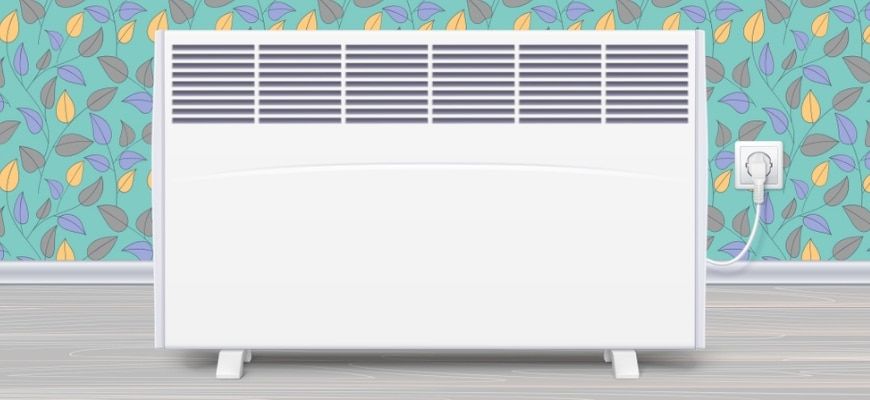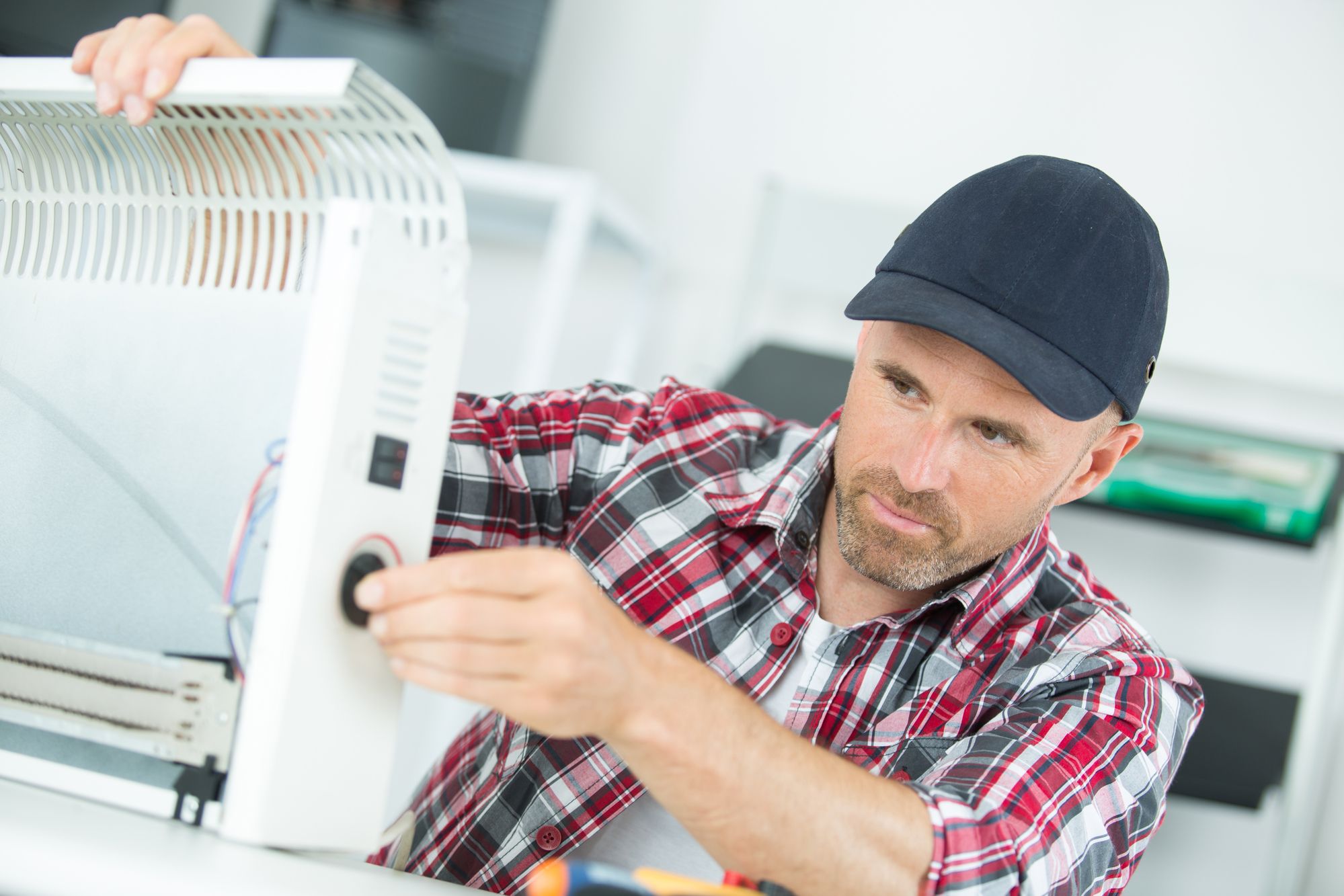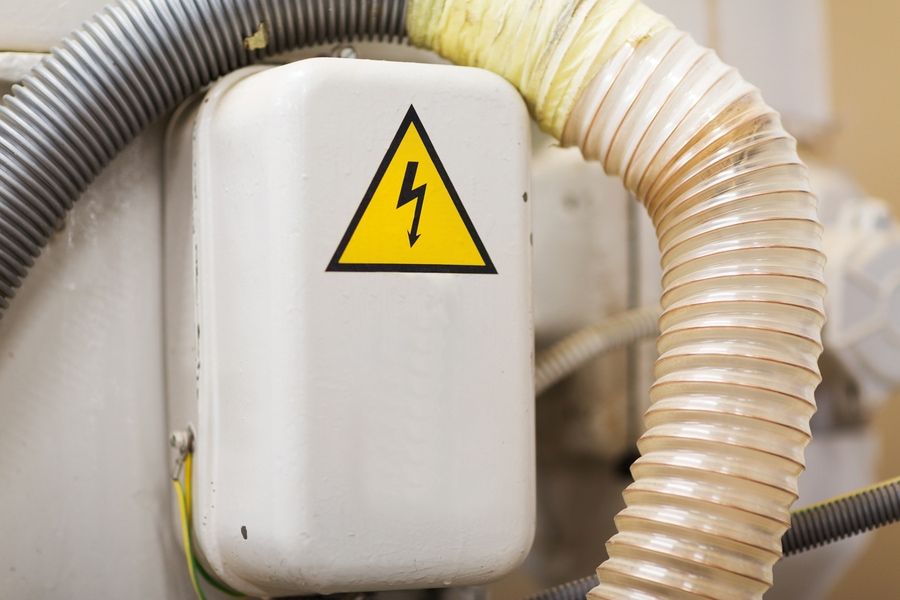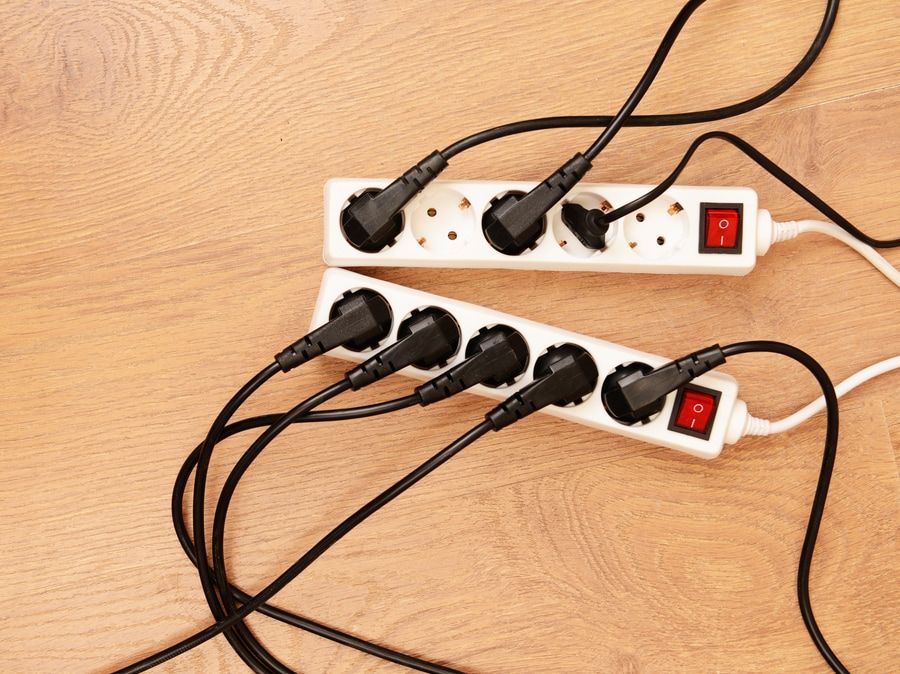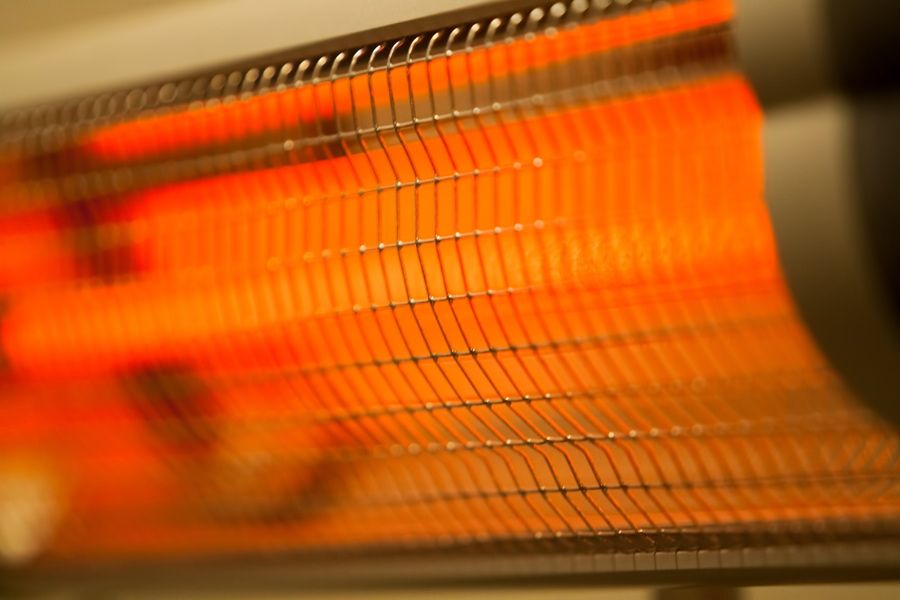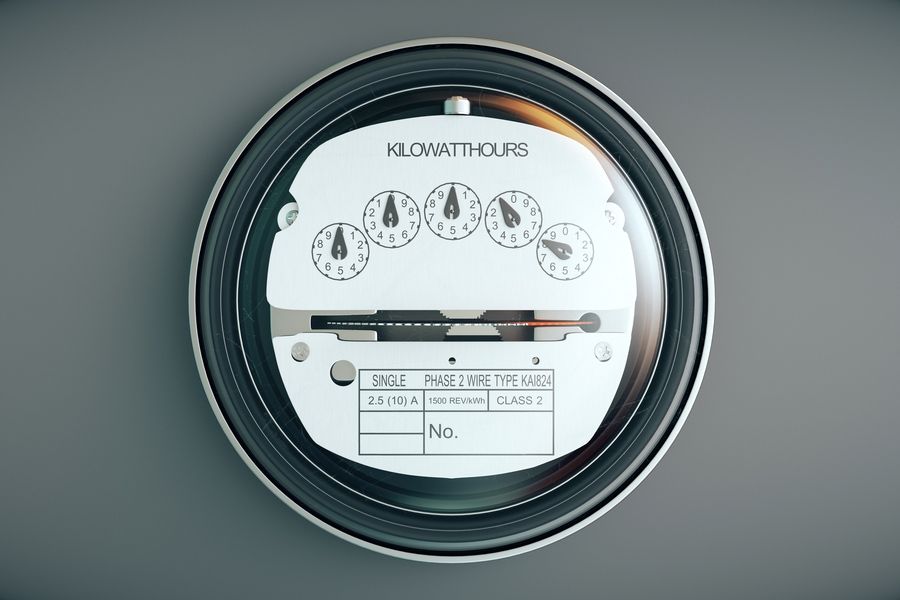What are space heaters? Space heaters are a great addition to have around the house, as they can back up the central heating system whenever outside’s temperatures are not working in your favor. While they are not meant to replace a central heating system, space heaters are portable and efficient in heating up a single room, and since they don’t occupy a lot of space, it’s easy for you to store them when they’re not in use.
View our list of top five space heaters for your home.
How Do Space Heaters Work and What are Their Benefits?
Space heaters bring a lot of different benefits to the table: some are quite obvious, while others are hidden.
#1: Lower initial investment
While very efficient, central heating systems are also very expensive. Naturally, the total cost will depend on several factors, such as the size of the home which determines the complexity of the project. Even if your home already has a usable duct system, the costs start off at $6.000.
That doesn't mean that you shouldn’t have a central heating system in your home, but you may not have the money right now. Even if a space heater is a temporary solution that can only heat up a single room, it is also the cheaper option and can save money.
#2: Cost effective repairs
Space heaters are not as complex in structure and construction as central heating systems are. However, that also means that if something were to break down, they are much easier to repair or replace. The cost for repairing a furnace system can go as high as $1.000, but a brand-new space heater costs between $30 and a few hundred dollars.
#3: Faster heating results
Naturally, this depends on the type of space heater that you choose. Every particular type has its own benefits and drawbacks, so you have to pay close attention to the heating system of each particular unit so that you know what to expect in terms of heat output. For example, fan heaters will provide quicker heating compared to oil filled heaters. You will feel the warm air coming into the room seconds after you’ve turned it on.
But here is the gist of it: central heating system will heat up the air, while space heaters heat up the objects inside the room, your skin and your clothes. Because of this system, you feel that space heaters are way more efficient, because your body warms up really fast.
#4: High portability
If there’s one thing that space heaters provide is the element of portability. Because of their small size, space heaters are often equipped with handles that allow you to pick up the unit and move it to a different room. Some bulkier models have wheels so that they can be pushed around.
Drawbacks of Space Heaters
Naturally, it’s not all sunshine and rainbows with space heaters, so here are the disadvantages of owning such a product.
#1: Can pose a safety hazard
There are ups and downs to this whole safety of space heaters issue. Normally, a decent space heater comes with safety elements and features, such as automatic shutdown of the unit when the components inside it heat above the average temperature, or when someone tips the unit over.
However, one can’t ignore the other safety implications of having such a heater. In the US alone, an average of 25.000 annual house fires are caused by space heaters being left on and overheating, with the average death count being 300. Also, nearly 6.000 people end up in the emergency ward with burns resulting for these fires.
In order to prevent putting yourself and your family in danger, consider the following tips:
- Never leave the room with the space heater unattended. Try to turn it on only when you’re in the room.
- Place the space heater away from flammable objects.
- Opt for units that have as many safety features as possible (more on that in the next section).
#2: May have health implications
Naturally, if you use the space heater for a few hours every once in a while, they are completely safe for your health, but when you abuse this product, you should consider the potential consequences:
- Space heaters can dry the air inside the room considerably, which means that you are more likely to end up with dry sinuses, dry eyes, and the likes.
- Some heaters can cause the oxygen levels in the room to drop, so if you were to sleep with one of these turned on, and especially in a small room, you could end up suffocating. However, oil filled heaters do not burn oxygen, so they are much safer in this regard.
Safety Considerations
The Electrical Safety Foundation International (or ESFI, for short) is an NPO created to educate people about the home and workplace rules to follow for electrical safety. As part of their efforts to keep people informed on how to avoid electrical hazards that could put their lives in danger, they’ve also put together a list of tips that will teach you how to safely use a space heater. The most important safety rules are:
- An important step that a lot of people overlook is reading the instruction manual of their brand-new space heater. Manufacturers are under the obligation of instructing the buyers on the safety hazards that a space heater offers. The manual will include important handling information, as well as required voltage and other electrical guidelines.
- Before you first use a space heater, make sure that you check the cord for any exposed wires. Also make sure there are no broken plugs or cracks in the space heater. For maximum safety, perform this check-up each time before you plug in the unit.
- Some of the market’s best space heaters are tested by authorized laboratories. This information should be specified on the label of the heater. Try to choose heaters which have been tested and are approved.
- Never use a space heater for another purpose other than heating the room. Do not use it to cook food or dry clothes.
- Make sure you never place the heater in areas with high traffic. That means that you should avoid placing it in the doorway and other parts of the room where you often walk through.
-
If possible, avoid using extension cords and instead plug the heater directly into a wall socket. Extension cords are more likely to heat up and cause a fire.
- Make sure that your space heater is always placed on a leveled surface. Unless designed otherwise, the space heater should always be placed on the floor (some heaters have wall-mounting systems, while others are very small and designed to be used on the desk.
- Try to unplug the space heater when you’re not using it. Also, make sure that you don’t leave the unit unsupervised when you leave the room.
Types of Space Heaters
While all space heaters are destined for temporary use, it’s important to understand the features, advantages, and disadvantages of each type. When you understand how they work and what purpose they serve, it will be easier to narrow your choices down to one of the following types of heaters.
Fuel Burners
Unlike some of the most common space heaters, this particular type does not use electricity to heat up the room but burns fuels instead. They are good for large rooms, and especially spacious garages.
One of the main disadvantages of this type of heater is that it releases carbon monoxide, as a consequence of burning fuel. If you use this heater in a really small space, the air can become poisonous, which is why you absolutely must avoid using this in the bedroom, while you are sleeping.
In general, this type of heater requires a flue system as a way to evacuate the gases. Because of that, this heater can take up more space, and has a more complicated installation process when compared to an electrical heater, that just needs a little bit of room and a spare power outlet. Also, take note that because of the flues, this heater requires permanent installation.
Radiative
Known to be one of the best options for home heating, radiative space heaters can range from infrared to fireplace heaters. They can also be used outdoors, and if you’re interested in one for to serve this purpose, you can look for a patio space heater.
One of the reasons why they are best-sellers is because they are efficient even inside a house that lacks proper insulation. Their functioning premise if the following: the heater emits radiation that “latches” directly to your body, instead of having a system that focuses on heating the air inside the room.
Because of this system, they work great as outdoor heaters. Since they are generally compact and lightweight, you can easily move them around from one room to another.
Convective
This type of space heater is designated for homes that are properly insulated. They are designed to warm up air and then use a fan to distribute the warm air inside the room. Compared to radiative space heaters, these will take their sweet time before you can actually tell the temperature difference.
You might think that this is the worst type of heater by far, but they do offer one great advantage: even after they’ve been turned off, the heating effect inside the room lingers for quite some time. To make the best out of this feature, you need to have good insulation.
Fillers
If you have a really small room, like maybe a bathroom, a small bedroom, or a pantry that you’d like to heat up, filler space heaters are the best option for you. They are efficient even in non-insulated spaces, as long as they are not used in large room.
This type of heater generally has a filler material which is warmed up with the help of electricity, warmth which is then dispersed into the room. The main disadvantage is that they take a long time to actually heat the room.
This happens because of the oil which doesn’t heat up instantly, but once it does, it also guarantees uninterrupted heating.
Types of Heating Elements
To give you a better understanding of what makes different types of space heaters work, let’s take a look at the eight most common heating elements:
- Electrical heaters have resistors that heat up by drawing in electrical current and converting it into heat.
- Ceramic heaters use wires that heat up the ceramic plates inside them.
- Micathermic heaters use mica heating elements, which are thin and light.
- Reflective heaters do not require electricity to operate, but instead have elements such as glass or foil that heat up the space.
- Convection heaters are based on convection currents that will cause heated air to rise and warm up the room.
- Infrared heaters use the power of electromagnetic radiation to heat up the room.
- Fan heater have electrical elements that general heat, which is then transported to a fan that disperses it into the room.
- Natural gas heaters use an actual flame to heat up the air.
What Are Radiators?
Easy to recognize because of their distinct shape, radiators have grown a lot in popularity over the past years, now being one of the go-to solutions for people who are looking to buy a space heater. Radiator space heaters can be:
- Based on steam. These radiators are connected to a boiler that usually resides in the basement of your home or apartment building you live in. These boilers will heat up water, and then send it through a pipe system which is connected to every individual radiator in the house. These are usually mounted under the windows, alongside a wall, and can’t be moved from their spot.
- Based on electricity. This portable type of space heater uses electrical current that heats up the elements of the unit, spreading heat throughout the entire radiator and into the room.
Features to Look Out For
Space heaters are getting fancier and fancier. Decades ago, a space heater would consume a lot of electricity, and aside from a power switch and two heating options, you didn’t really have that many features to choose from.
Today’s space heaters are more about being eco and child-friendly, and they’re packed with everything from thermostats to remote controls. Depending on what exactly it is that you prioritize in such a product, here are some features that you might be interested in:
- Safety features are the most important ones and should never be neglected. You should look for a model that has both overheating and tip over auto shutdown features, but there are plenty of other safety options that you may want to consider. Some space heaters are designed with an external case that won’t heat up even when elements inside the unit do. This means that if your children accidentally touch the case, they won’t get burnt.
- If you have children with a reputation of fiddling with everything in sight, look for a heater that has a child lockdown feature. This means that you can block the current settings of the machine, and the child won’t be able to mess with them even if they start randomly pressing buttons.
- If it’s portability you’re after, and you plan on moving the heater between rooms, look for a model that has handles. These are easier to grab and move around. Bulkier heaters, such as radiators, typically have wheels attached to the bottom of the unit, so you can push them around instead of lifting them up.
- The built-in thermostat is also an interesting feature, particularly if you’re planning on using the space heater more than a couple of hours per day. The thermostat does what pretty much every other thermostat would do: you set a desired temperature, the heater functions until the room reaches that temperature, at which point the unit will automatically turn off.
- Some space heaters also have built-in timer, which means you can program the heater to turn off automatically. Heaters have preset timer options, such as one, two, or four hours. This feature is useful for those of you that want to heater to run a bit longer after you’ve gone to bed, but don’t want it to stay on until morning. Just set the heater to turn off after 60 minutes, and you don’t have to worry about getting up to manually turn it off.
- If you really want to take it up a notch, you can also buy space heaters with remote controls. They seem to be some of the most efficient. Then you can fully operate the unit without leaving the comfort of your sofa.
How Much Electricity Do Space Heaters Use?
Are space heaters energy efficient? Space heaters were designed to act as secondary heating unit, and to help people save energy by taking their central heating system down a notch. If you want to find out precisely how much energy your space heater consumes, you will have to do a little bit of math.
On the label or package of the heater, you should have information about wattage. Wattage represents the amount of electrical energy that the space heater needs to run. On average, space heaters consume about 900 watts when they are in low mode, and 1.500 watts when they are set to a more powerful heating mode.
1.000 watts are the equivalent of a single kilowatt, which means that 1.500 watts are equal to 1.5 kilowatts. Here’s where things get a little more complicated. The electricity bill is calculated considering how much energy is consumed when running a one kilowatt appliance over the duration of one hour.
To identify how much energy your 1.5 kilowatts heater uses, you will have to multiply the wattage to the number of hours the heater is used per day. For example, if the heater uses 1.500 watts for one hour, and you use it for about four hours every day, that means the heater consumes 6.000 watts per day.
6.000 watts are the equivalent of six kilowatts. Now, take the six kilowatts and multiply this number with how much your electrical company charges for one kilowatt. If your electricity provider charges $0.30 per kilowatt, that means that four hours of space heater use will cost you $1.8.
Conclusion
It’s almost surprising how much information you have to know before buying a space heater. From the exterior, they may look like plain heating devices, but their construction and variety of components and heating elements make them quite complex machines.
When buying a space heater, safety is one of the most important aspects to inquire about. The more auto shutdown features the heater has, the less likely you or home are of being in fire danger. You might also want to look at the wattage, so you can get an idea of how much the heater will cost per hour, electricity bill-wise.

